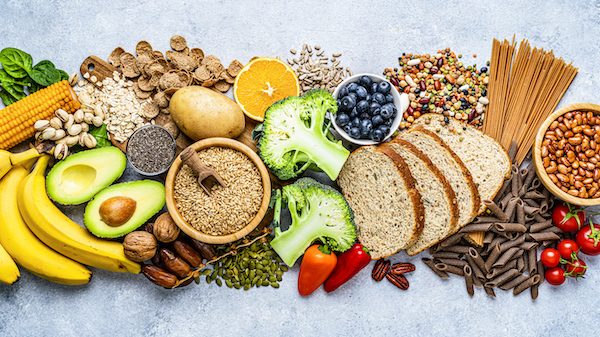Ever heard someone jokingly say, “I’m addicted to sugar?” This isn’t just a saying — and it’s definitely not a joke.
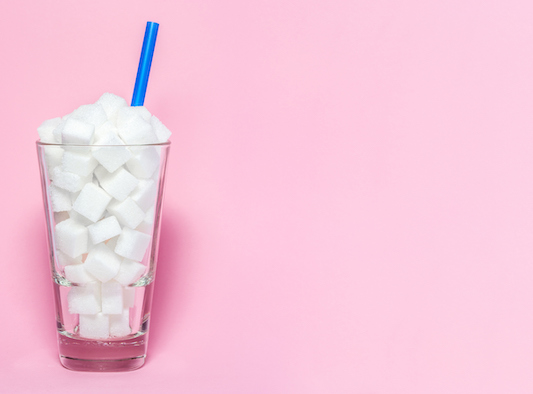
If you feel powerless against the appeal of sugary soft drinks, sweetened “fruit” juices and teas, or artificially sweetened beverages, it could be your body is experiencing a biological addiction to sugar or artificial sweetener on a cellular level.
It’s a fact: both artificial and natural sugars are scientifically proven to be equally or even more addictive than cocaine. When laboratory rats were given the choice between saccharin (an artificial, calorie-free sugar substitute) and cocaine, 94% of them chose saccharin. The rats continued to choose the sweetener over cocaine, even when the artificial saccharin was replaced by sucralose, a natural sugar. [Read more about the dangers of artificial sweeteners.]
The reason the rats chose sugar over cocaine is simple: a high-sugar diet (HSD) has been shown to activate the same neurobiological pathways that scientists normally only associate with the use of hard drugs. This creates dopaminergic, cholinergic and opioid-like effects that mimic the impact of psychostimulants (meth, cocaine, Adderall) and opiates like Oxycontin or heroin. Another study published in the British Journal of Sports Medicine demonstrated that sugar consumption creates the same behavioral patterns of binging, craving, tolerance and withdrawal symptoms that drug users experience in the throes of addiction.
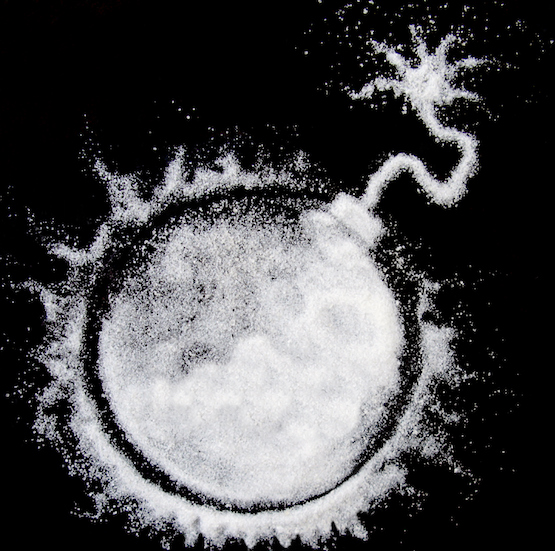
Why does this matter? This may shock you, but high sugar diets have been shown to act as a kind of “gateway drug,” contributing to the development of other substance-use disorders and addiction to hard drugs and alcohol, given the dopamine-reward dysregulation that chronic sugar consumption creates. What’s more, a high-sugar diet has also been linked to the development of mental health disorders including depression, anxiety and impulsive behavior, thanks to the way that sugar artificially induces the “dopamine dump” of reward and pleasure.
Making matters worse, unlike salt, the body doesn’t have a “safety mechanism” that signals to our brains that we’ve eaten too much sugar and should therefore stop.
What all of this means is that every time we ingest sugar, we unknowingly board the “sugar roller coaster” — resulting in huge spikes of insulin (blood sugar), dopamine (happiness hormone) and cortisol (stress hormone). This leads to fat storage, chronically elevated stress levels, brain damage and perhaps worst of all, intense cravings for even more sugar.
Over time, chronic sugar consumption increases our risk for serious negative health consequences and disease. In addition to the perils of addiction, the deleterious effects of refined sugar and high fructose corn syrup include systemic inflammation, obesity, diabetes, altered memory, learning disorders, aggression, tooth decay, arthritis, metabolic syndrome, non-alcoholic liver disease, brain and cognition issues, as well as excess fat around the waist (aka belly fat).
Let’s dig into some of the not-so-sweet truths about these critical health issues.
Brain Health
Most people don’t know how harmful sugar can be for brain development and long-term brain health in people of all ages — especially children.
Recent neuroimaging (brain scan) studies have revealed that sweet beverages like fruit juice or tea can cause neurological changes in the brain similar to that of cocaine and other street drugs. The Framingham Heart Study (FHS) demonstrated that people who drink one or more sugary beverages per day are more likely to develop preclinical signs of Alzheimer’s disease and dementia, including smaller overall brain volumes and smaller hippocampal volumes — an area of the brain that’s crucial for memory. The study also found that people who consumed 1-2 sweet beverages per day were effectively accelerating the aging process of their brains by 6 years while those who consumed more than 2 sugary drinks per day experienced the equivalent of 11 years of accelerated brain aging.
Obesity
Did you know that sugar-sweetened soft drinks represent the largest single “food” source of calories in the average American’s diet? It’s sad but true: more than 30% of the carbohydrates consumed by Americans come from caloric sweeteners.
It’s no coincidence that obesity has developed into a global crisis in direct proportion to the rising popularity of sugar-sweetened beverages over the past 20 years — carrying serious comorbidities like hypertension, cardiovascular disease, diabetes, depression and more than 11 types of cancer. The World Cancer Research Fund has identified obesity as one of the primary contributing factors to at least 11 cancers, including liver, breast, pancreatic, prostate, ovarian, gallbladder, kidney, esophageal, adenocarcinoma and colorectal cancers.
What about “sugar-free” or “diet” drinks?
Contrary to their deceptive marketing, these lower calorie artificially sweetened options actually promote weight gain and can sabotage your efforts to lose weight. When you drink an artificially sweetened beverage, your body responds by releasing insulin to metabolize the “sugar” it detects in your bloodstream. High insulin levels trigger the release of the hunger hormone ghrelin, which creates a craving for more refined carbohydrates and sugars. These artificially sweetened beverages add empty calories that don’t satisfy your hunger the way real food does — which can lead to overeating, weight gain, obesity and disease. In fact, a Harvard study found that your likelihood of becoming obese increases 1.6x for every sweetened beverage you drink each day.
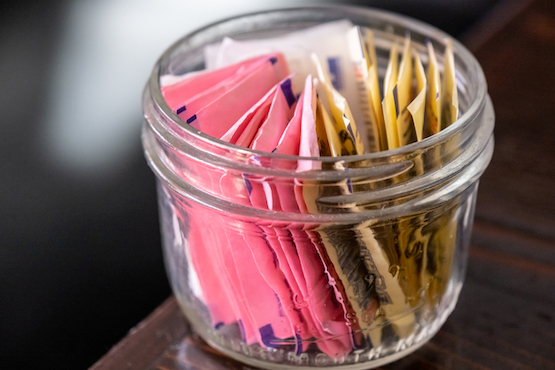
Teeth and Bone Health
When I first met Little Mo, a four-year-old Moroccan boy with clubfeet living in the Atlas Mountains, I noticed that he was missing all his teeth. I later discovered that his diet consisted mostly of highly processed “foods” and artificially sweetened sodas, which had been heavily subsidized by the Moroccan government and made widely available to even the most remote regions. Little Mo wasn’t the only one who was suffering; almost every child in his village was suffering from dental infections, rotten teeth and cavities due to the artificial sweeteners and processed foods they were consuming daily. Learn more about my journey with Little Mo in my new book, The Little Mo effect: A surgeon’s compassion for a charismatic Moroccan boy transforms many lives – including her own.
If you want to see a live reenactment of the effect that soda has on your teeth and bones, check out this video demonstrating Coca Cola vs. a corroded car battery (spoiler alert … the soda wins!).
Think of your body and skeleton as the car battery in this video. Like most soft drinks, Coca-Cola contains carbonic and phosphoric acids to create fizz and flavor. When these ingredients combine in your body, they lower your blood pH to an acidic level that isn’t safe or sustainable for your health. The body tries to correct this pH imbalance by using calcium naturally stored in your bones because calcium acts to neutralize the pH of your bloodstream. Over time, this process results in calcium depletion in bones, which leads to serious bone health conditions like osteopenia and osteoporosis.
The most critical time for bone building is during the late teens and early 20s. Sadly, 40% to 60% of peak bone mass develops during the adolescent years — a time when many adolescents are indulging in artificially sweetened carbonated beverages.
Ingredients … or Toxic Waste?
If the destructive effects of high fructose corn syrup and carbonic acid doesn’t surprise you, these toxic ingredients commonly found in most sodas probably will:
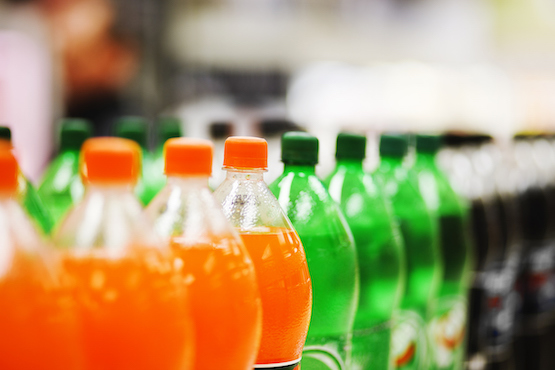
- Benzene: Corporations like Nestle prioritize profits over consumer health and are driven by economic incentives to produce these addictive products at the lowest possible cost. For example, manufacturers often combine benzoic acid with Vitamin C to extend the shelf life of sodas. Unfortunately for consumers, these two compounds combine to make benzene. You’ve probably heard of benzene before: benzene is a natural part of crude oil, gasoline and cigarette smoke. Benzene also causes leukemia and lymphoma. The cancer-causing effects of benzene were first reported in the 1920’s. Kool-Aid, Crystal Light, Ocean Spray cranberry juice, Fanta and Sprite all contain benzene. Most sodas made by Safeway were found to be the worst offenders. When confronted with this issue, companies chose to reduce the amount of benzoic acid to meet national regulation/supposedly “safe” levels. I’d like to know how companies controlled the number of sodas consumed by one individual in a day to stay within “safe” levels — what about the 32 oz “Supersize” soda? The bottom line is clear: there is no amount of benzene that is safe for human consumption.
- Artificial Dyes and Flavoring: To add insult to injury, manufacturers add caramel coloring to give soda that distinctive brown shade, also known as Caramel E150d, which contains methylimidazole. In 2007, scientists discovered that this chemical causes lung and other cancers in mice. Yet the FDA concluded that there was “no short-term or immediate risk” and did not implement any changes in their regulatory requirements for sodas.
Whether it manifests as cancer, Alzheimer’s disease, chronic stress or obesity, the lethal ingredients in soda and sugary drinks pose a serious threat to children and adults worldwide. From canned orange juice to sweet tea or Diet Coke, it’s undeniable that sugary beverages fail to provide any healthy nutritional value — instead, they fill our bodies with empty calories, carcinogenic chemicals and send us on a blood sugar roller coaster that never ends well for the consumer. The only people who benefit from our global addiction to sugary beverages are the multi-billion-dollar corporations who manufacture these toxic products and use deceptive marketing to sell them to our children.
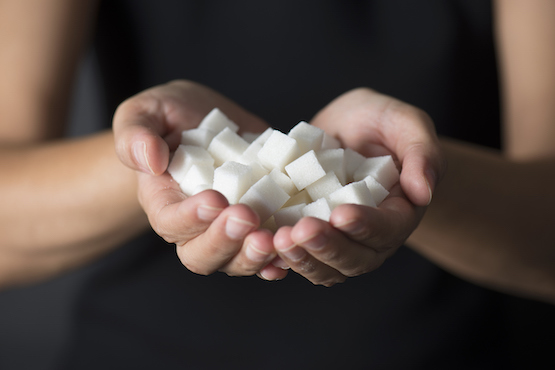
Given what we know about adolescent brain development, there is no doubt in my mind that sugary drinks, artificial flavorings and synthetic dyes should only be introduced after the brain has fully developed or preferably not at all.
Since brain development peaks during teenage years, I propose a minimum age of 21 to purchase and consume carbonated sweetened or diet drinks. Like cigarettes, alcohol and guns, soft drinks cause serious short- and long-term damage to the body, which dramatically increases the cost of health care. The decision to consume such deleterious products should only be made once the brain has fully developed. By the way – this is one more reason why we should rethink gun ownership in underdeveloped brains, especially if they drink a lot of sodas!
For the rest of us, it’s time to acknowledge the dangers of sugar in our lives and act accordingly. The not so sweet truth is that sugar’s harm far outweighs its momentary pleasures.
 | Concerned about insulin resistance and diabetes? Learn 4 ways to naturally balance your blood sugar. |









